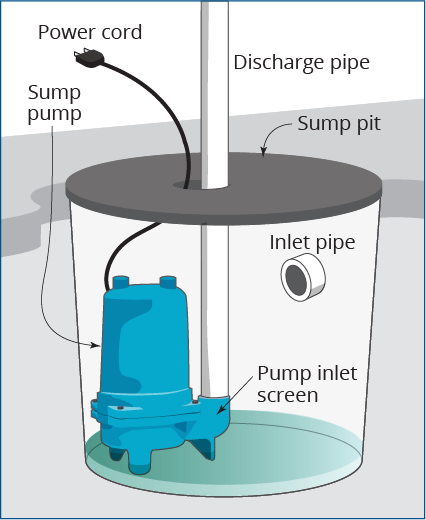Heavy rain can saturate the soil and can cause groundwater to enter the basement through a sump pit. Sump pumps direct this groundwater away from the home through drainage pipes and work best in homes that experience flooding caused by rain. If your basement floods, you may need to get a sump pump or replace the one you have.
Here is a typical sump pit with a sump pump connected to a drainage system.

Before you start
You will need:
- Goggles
- Gloves
- Garden hose
- Wire brush
- Cleaning product
- Bucket (of water)

Step 1
Assess your sump pump once a year. You should replace it if:
- It is more than 10 years old.
- You notice deep puddles form around your home when it rains.
- You never hear the sump pump running.
- You hear the sump pump power on and off when it’s raining.
Step 2
Turn off the breaker and unplug the power cord to disconnect the power to the pump.
Step 3
Disconnect the sump pump from the discharge pipe and remove the pump from the sump pit. Some water may run back from the check valve once the pump is removed.
Step 4
Remove the check valve. Clean debris from the exterior of the pump. You can use a garden hose to clean the debris. Use a wire brush to clean the pump inlet screen. Cleaning the pump inlet screen more than once a year is recommended.
Step 5
Inspect the check valve. Check the owner’s manual to find out if the pump bearings require grease or oil. If you don’t have the owner’s manual, search for it online using the manufacturer and model number.
Step 6
Reconnect the check value and put the sump pump back into the sump pit.
Step 7
Restore power by plugging in the power cord and flipping the breaker.
Step 8
Test the sump pump. Pour a bucket of water into the sump pit. The sump pump should turn on.


